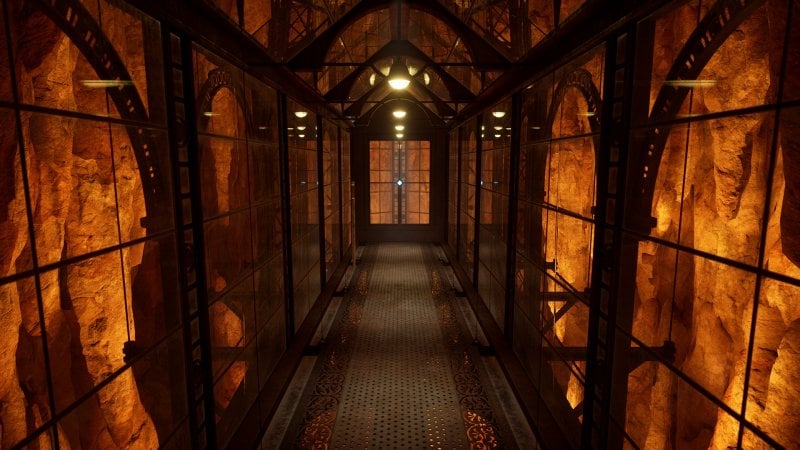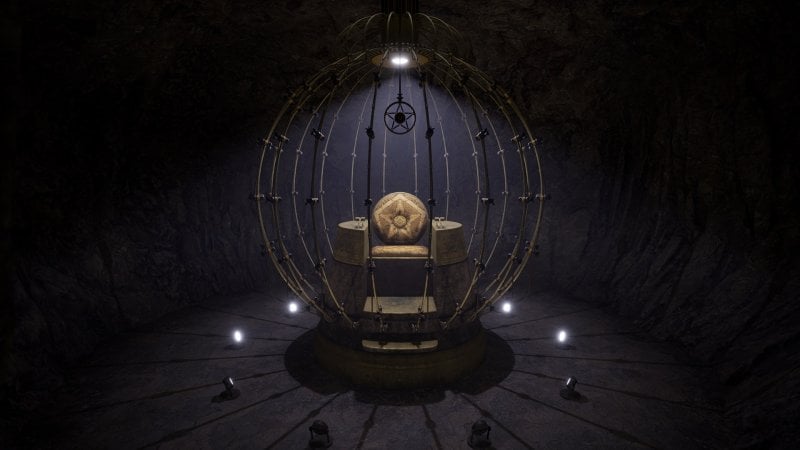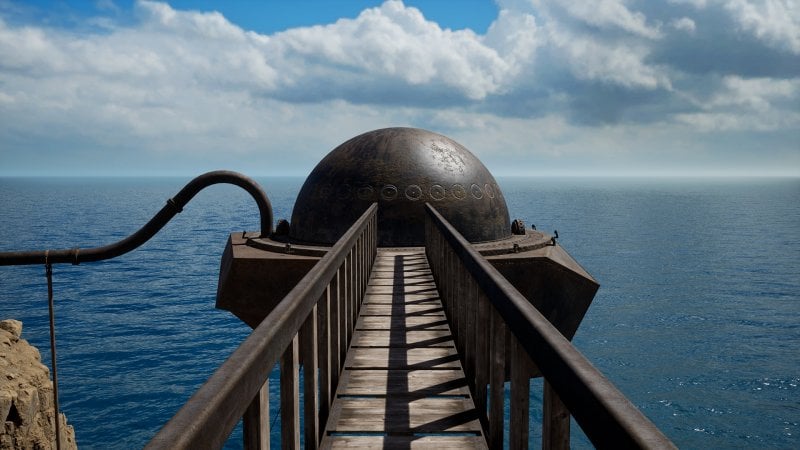
Riven the review of one of the best remakes of recent years
The review of Riven, one of the best remakes of recent years that intelligently reinterprets a classic point-and-click adventure.
Thinking about the 90s and the advent of CD-Roms, the first name that comes to mind is definitely Myst by Cyan Worlds, probably the title that contributed most to the spread of new media, which are now their history. Stripped down to the bone, it was a point-and-click adventure, but it exploited new technologies so intensely, also thanks to a very inspired artistic direction, that it managed to attract the attention of millions of people. Myst literally catapulted you into a unique world, made of strange mechanisms and evocative atmospheres. It seemed like being in a magic box as big as an island.
Despite the undoubted importance of the original experience, for many the greatest expression of that way of conceiving video games was Riven , the official sequel to Myst. It was set in the same world, but expanded its imagery and implications, transforming a story of kidnapping into a philosophical fight against a huge mechanism that unfolded across multiple islands. The greater resources employed, the fantastic atmosphere and the intelligence of the puzzles made Riven a unique experience, “sacred” in its own way, so much so that when Cyan Worlds announced the remake last year, many feared the worst. Fortunately, the operation was conducted in such an intelligent and refined way, to have produced another masterpiece, which can be placed side by side with the original without any fear of reverence.
The same vision
Cyan Worlds is currently the oldest independent software house in the United States (it was founded in 1987, initially dealing with adventure games for children). Despite the alternating successes, Rand Miller, the only one of the two brothers who founded it to have remained in the company (Robyn went into cinema), never wanted to sell.

The last few years, those of the splendid but little-mentioned Obduction and Firmament , have seen a progressive recovery that, while never allowing it to return to the glories of the Myst years, have allowed it to work with a certain serenity on the remake of Riven, a project deeply felt by Rand Miller, put into action only when modern technologies made it possible to transport it into 3D without losing the original atmosphere , an atmosphere that you can breathe in as soon as you start the game and watch the introduction, in which we are given a very important book that will be stolen from us immediately afterwards by a strange character.
After a few hours spent solving puzzles, many of which were similar to the original but changed just enough to make them less predictable, we found ourselves mentally overlapping the two games , so much so that we were forced to restart the 1997 Riven to better understand what we were dealing with.
Riven – Gameplay Trailer
In this way we understood how deep the work done on the remake was , that is, how much care was put into recreating the gaming experience so as not to make it lose the charm that characterized it, keeping the original vision unchanged. Precisely what at a certain point seemed obvious to us suddenly became the greatest quality of the entire experience, that is, the awareness of not having had any difficulty in recognizing Riven in Riven. We found ourselves once again in a surreal and timeless world, made of enormous buildings full of strange mechanisms to decode, in which everything seemed new but at the same time familiar.

Built with Unreal Engine, we played Riven on both Steam Deck and a system with a GeForce RTX 3070, and found it to be gorgeous in both cases. It’s not particularly polygon-rich, but the excellent composition of the environments, as well as the color palette that gives some places a metaphysical look, made it a pleasure to (re)visit it.
Cryptic
Riven manages to convey the same sense of alienation as back then . At the beginning we are told practically nothing. We are not even explained how to interact with the scenario. In reality the interface is really simple, based as it is on a contextual cursor that adapts to the object we are interacting with, but the initial effect, widely sought, is that of being lost in a pleasant place that we know nothing about.

We are on an island and we are surrounded by silent and mysterious monolithic structures. The book has been stolen, but where has the thief gone? Above all: who is he? We take a few steps and we find ourselves in front of a kind of sanctuary. We press a large button and the building rotates on itself, opening access to an underground tunnel. Why? We don’t know.
Decoding what surrounds us and understanding why this world is dying is an integral part of the experience that, being somehow circumscribed, never sends us adrift, but involves us by gradually revealing its elements, sometimes suggesting what to do implicitly, other times deceiving us to make us admire its perfect construction. Accustomed to modern games, someone might consider the lack of an initial guide as a problem. In reality, being thrown into the adventure represents a good part of its charm: we immediately perceive the gears that regulate the world, but we must find a way to make them move.
Explorers
Riven thus transforms us into explorers who look out of every window and examine with maniacal attention every structure that they find in front of them, even those that are apparently non-interactive, with the aim of obtaining some indication to move forward, or simply to be able to reconstruct part of the story they are experiencing .

It makes you think that an excess of verbosity in the writing, that is, too many explanations thrown at the player, would have literally destroyed it, where in any case you never have the impression of being blocked by shortcomings in the game design. In this Riven has not changed: it is an experience at the same time reflective and contemplative , somehow sublime in its desire to escape immediate understanding. It has its own rhythm, it must be said very slow, functional in giving the player time to reflect, or simply to start admiring the horizon, observing from afar another strange island about which nothing is known yet, however aware that it is part of the whole and will certainly have its purpose in the puzzle we are composing. In this sense, the notebook is particularly useful, which allows you to keep track of everything, even making us draw images, as if we were scientists taking notes on the wonderful and unexpected place where they find themselves, trying to rationalize it.

Of course, Riven also requires a lot of effort. Its puzzles are not easy to solve at all . Cyan has given away more hints than there were in the original, but getting to the end is still a feat, with machines to activate, bridges to connect, and so on. In this sense, it is a truly uncompromising point-and-click adventure. After all, if the puzzles had been easy to solve, the pace would have gone to hell and the player would have been able to dart from one place to another without caring about what is around him. Instead, this way, he remains always on his toes and is more inclined to consider the details, carefully observing everything, finally managing to have a more complete picture of the situation… which is ultimately the goal of the entire game.
Also Read:
3 THINGS WE WANT FROM RESIDENT EVIL 9: IS THE OPEN WORLD TWIST REALLY NECESSARY?